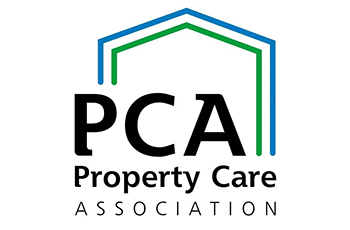premier preservations
Condensation & Ventilation
There is always some moisture in the air, even if you cannot see it. If the air gets colder, it cannot hold all the moisture and tiny drops of water appear – the Dew Point. This is condensation. You also notice it when you see your breath on a cold day, or when the mirror mists over when you have a bath. Kitchens and bathrooms are often primary sources of atmospheric water.
What is Condensation?
Moisture is released into the air through normal daily activities such as washing, cooking, drying clothes, showering and bathing. Condensation can occur commonly on windows or external walls, or cold surfaces within the fabric of the property. Look for it in corners, on or near windows, in or behind wardrobes and cupboards. It often forms on north-facing walls.
Condensation is often associated with poor heating and ventilation in buildings. It is more apparent in winter, as the external air temperature is low and walls and windows are cold. The usual sequence of events is as follows:
- Cold air enters the building
- The air is warmed for the comfort of the occupants
- The warm air takes up moisture
- The warm, moist air comes into contact with cold surfaces (walls, windows, etc.) and is cooled below its Dew Point
- Condensation occurs as the excess moisture is released
Problems Caused by Condensation
Running water on windows and walls is perhaps the most immediate indication of a condensation problem. If ignored this can lead to a deterioration in the decorative condition of the property, stained curtains, decay in window frames and the appearance of moulds on the surface of wallpapers and paints in poorly ventilated areas. Condensation can also occur under suspended floors and in roof voids, greatly increasing the chances of fungal decay.
Mould
The development of mould growth is the most common tell-tale sign that is frequently associated with condensation. It can lead to staining, damage to wallpaper, wall surfaces, window frames, furniture and clothing. The appearance of mould may be black, white, yellow or green in colour, depending on the specific type of mould and the surface on which it grows.
Moulds are hydrophilic fungi in that they require high levels of moisture. Capillary held dampness (such as that originating through rising dampness) is not sufficient to cause mould growth. The mould requires free moisture on the surfaces to germinate and grow.
Tiny spores produced by the mould and the higher numbers of dust mites due to the moist conditions can increase the risk of asthma and respiratory illnesses in some people.
Handy Tips
- Dry-clean mildewed clothes
- Shampoo carpets
- Avoid disturbing the mould by brushing or vacuum cleaning
- Following treatment, redecorate using a good quality fungicidal paint to prevent mould
- Do not over-coat with ordinary paint, emulsion or wallpaper. Use a mouldicide solution additive to mix with the paint, or wallpaper paste containing a fungicide
- Using a dehumidifier will help control the airborne moisture and help reduce the problem, however, dehumidifiers will not solve the cause(s) of the condensation problem.
Mould Cleaning
Regular cleaning away of mould is vital. To remove mould, wipe down walls
How to prevent Condensation
Reduce the potential for condensation by producing less water. Cooking with pan lids on and turning the heat down once the water has boiled, will greatly reduce condensation. Only use the minimum amount of water for cooking vegetables and when filling the bath, run the cold water first then add the hot – it will reduce the steam which leads to condensation by up to 90%.
Avoid drying laundry on radiators and where possible, dry washing outdoors or place in the bathroom with the door closed and the window open/extractor fan on.
When using a tumble dryer, make sure it is vented to the outside (DIY kits are available for this) or is a condenser dryer.
Do not use your gas cooker to heat your kitchen as it produces moisture when burning gas – you will notice the windows misting up.
Ideally, extractor fans should be constant duty fans or be humidistat controlled. Most will be solely activated by a light switch. If you are purchasing a new fan, it will be worth investigating the automatic function
Kitchen and bathrooms require more ventilation due to cooking, washing, bathing and drying creating high levels of moisture. Close the bathroom and kitchen doors when these rooms are in use, even if the kitchen or bathroom extractor fans are on. This stops the moisture reaching other rooms, especially bedrooms which are often colder and more vulnerable for condensation.
Tips to Circulate Air
- Open doors to ventilate cupboards and wardrobes
- Leave space between the backs of wardrobes and the wall. Where possible, position wardrobes and furniture against internal walls i.e. walls which have a room on both sides rather than external walls
- Avoid overfilling wardrobes and cupboards as it restricts air circulation
- To reduce the risk of mildew on clothes and other stored items, allow air to circulate round them by removing ‘false’ wardrobe backs or drilling breather holes in them. You can place furniture on blocks to allow air to circulate beneath.
Heat your Home
In cold weather, the most efficient way to keep rooms warm enough to avoid condensation is to have low background heating on all day – even when there is no one at home. This is very important in flats, bungalows and homes where the bedrooms are not above a warm living room.
If you have central heating, set it to provide background warmth in ALL rooms including any unused rooms. Use the heating system on a regular balanced cycle with all radiators working to all rooms during colder periods.
Otherwise install suitable thermostatically controlled heaters where necessary. The thermostats will help control heating and costs.
Ventilation
PIV units are designed to draw fresh air from within the roof void or if a PIV Flatmaster is specified, from the outside then through the filters and inputting it at ceiling level into the property. Stale, contaminated and moisture laden air in the home is continuously diluted and displaced through leakage points that are found in all houses. This is replaced with fresh filtered, tempered air creating a healthier environment. These units are low maintenance (filters replaced every 5 years) and run on a trickle charge resulting in running costs of around 1p per day.
Positive Input Ventilation System
PIV units are designed to draw fresh air from within the roof void or if a PIV Flatmaster is specified, from the outside then through the filters and inputting it at ceiling level into the property. Stale, contaminated and moisture laden air in the home is continuously diluted and displaced through leakage points that are found in all houses. This is replaced with fresh filtered, tempered air creating a healthier environment. These units are low maintenance (filters replaced every 5 years) and run on a trickle charge resulting in running costs of around 1p per day.

Need some friendly help & advice
Call the Team – 01274 616311
Request Survey![]()
Survey Request Form
Our Details
If you would like to contact us regarding any of our services please fill in the contact form provided. We will try our best to reply within one hour.
Alternatively you may wish to speak to us direct on:

Premier preservations Ltd is a limited company registered in England and Wales.
Company registration No. 03920596







